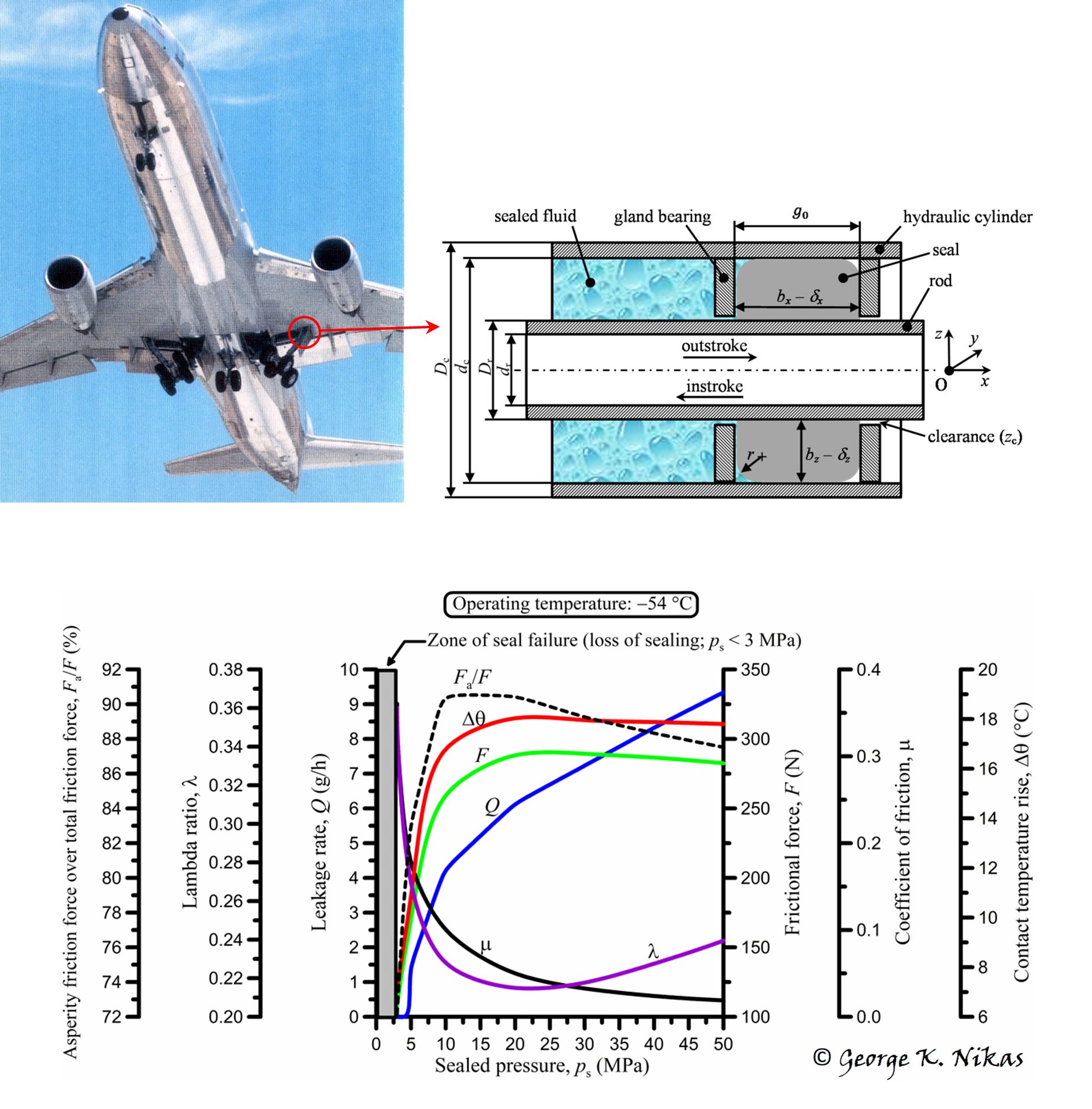
Paper: Parametric and optimisation study of rectangular-rounded, hydraulic, elastomeric, reciprocating seals at temperatures between –54 and +135 °C.
Author: George K. Nikas
Published in: Lubricants, 2018, 6(3), article 77 (open access)
Abstract
Hydraulic, reciprocating, polymeric seals are met in many
engineering applications and are critical components for mechanism and
machine reliability in industries including the automotive, marine, and
aerospace industries. A parametric and optimization study of
rectangular-rounded, hydraulic, reciprocating, elastomeric rod seals at
−54, +23, and +135 °C is presented, which is particularly relevant to hydraulic
actuators in aircraft landing gear. Parametric optimization not only
improves performance, but also helps avoid sealing failures. The
calculations were based on a physically based, deterministic mathematical model
of such seals, experimentally validated at the aforementioned
temperatures and recently published by the author. The parameters
varied were the seal axial width and corner radius, seal elastic
modulus, sealed pressure, stroking velocity, operating temperature,
rod surface roughness, seal radial interference, and seal swelling by
fluid uptake. Their influence was established based on the following
performance variables: leakage rate, frictional force, coefficient of
friction, temperature rise in the sealing contact, lambda ratio
(proportional to the average film thickness in the contact), and ratio
of the asperity friction force to the total friction force. The
parametric study greatly facilitates the selection of optimal values
of the analyzed parameters to minimize leakage, friction, and wear,
either concurrently as a set or individually, depending on application
priorities.
